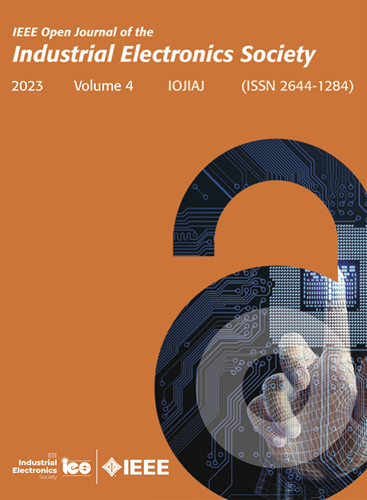一种新型外多模态成形关节机构充气管机器人
IF 7.2
1区 工程技术
Q1 AUTOMATION & CONTROL SYSTEMS
引用次数: 0
摘要
连续体机器人由于其适应性和灵活性的优点,近年来在探索非结构化环境方面获得了显著的潜力。然而,对于连续体机器人来说,在大范围的三维空间中实现灵活和可操纵的变形仍然是一个挑战。介绍了一种新型的外多模态成形关节(MMSJ)充气管机器人的设计与控制。MMSJ与一个电磁开关元件配合工作,仅使用两个电机,就可以在管道外部显示多种模式,包括爬行、旋转和弯曲,从而引导充气管产生3d变形。在参数化分析的基础上,开发了爬行模式下的摩擦阻力和弯曲模式下的扭矩阈值的定制装置,精心设计了充气管机器人。在实际样机上的实验表明,所设计的机器人能够实现可操纵的三维变形,最大弯曲范围为130°,MMSJ的最快爬行速度为10 mm/s,具有在三维不同环境中穿行和操作的潜力。本文章由计算机程序翻译,如有差异,请以英文原文为准。
A Novel Inflated Tube Robot With External Multimodal Shaping Joint Mechanism
Continuum robots recently have gained remarkable potential in exploring unstructured environments due to the merits of adaptability and flexibility. However, achieving flexible and steerable deformation in wide-range three-dimensional (3-D) spaces is still challenging for continuum robots. This article presents the design and control of a novel inflated tube robot with an external multimodal shaping joint (MMSJ) mechanism. The MMSJ works in conjunction with an electromagnetic switching element to exhibit multiple modes including crawling, spinning, and bending alongside the tube exterior by using only two motors, guiding the inflated tube to generate 3-D deformation. By developing the tailored apparatus to acquire the friction resistance in crawling mode and the torque threshold in bending mode, the proposed inflated tube robot is elaborately devised based on the parametrical analysis. Experiments on a real robot prototype demonstrate the capability of the devised robot in achieving steerable 3-D deformation with the maximal bending range at 130° and the fastest crawling rate of the MMSJ at 10 mm/s, which endows the potential for traversing and operating in 3-D diverse environments.
求助全文
通过发布文献求助,成功后即可免费获取论文全文。
去求助
来源期刊

IEEE Transactions on Industrial Electronics
工程技术-工程:电子与电气
CiteScore
16.80
自引率
9.10%
发文量
1396
审稿时长
6.3 months
期刊介绍:
Journal Name: IEEE Transactions on Industrial Electronics
Publication Frequency: Monthly
Scope:
The scope of IEEE Transactions on Industrial Electronics encompasses the following areas:
Applications of electronics, controls, and communications in industrial and manufacturing systems and processes.
Power electronics and drive control techniques.
System control and signal processing.
Fault detection and diagnosis.
Power systems.
Instrumentation, measurement, and testing.
Modeling and simulation.
Motion control.
Robotics.
Sensors and actuators.
Implementation of neural networks, fuzzy logic, and artificial intelligence in industrial systems.
Factory automation.
Communication and computer networks.
 求助内容:
求助内容: 应助结果提醒方式:
应助结果提醒方式:


